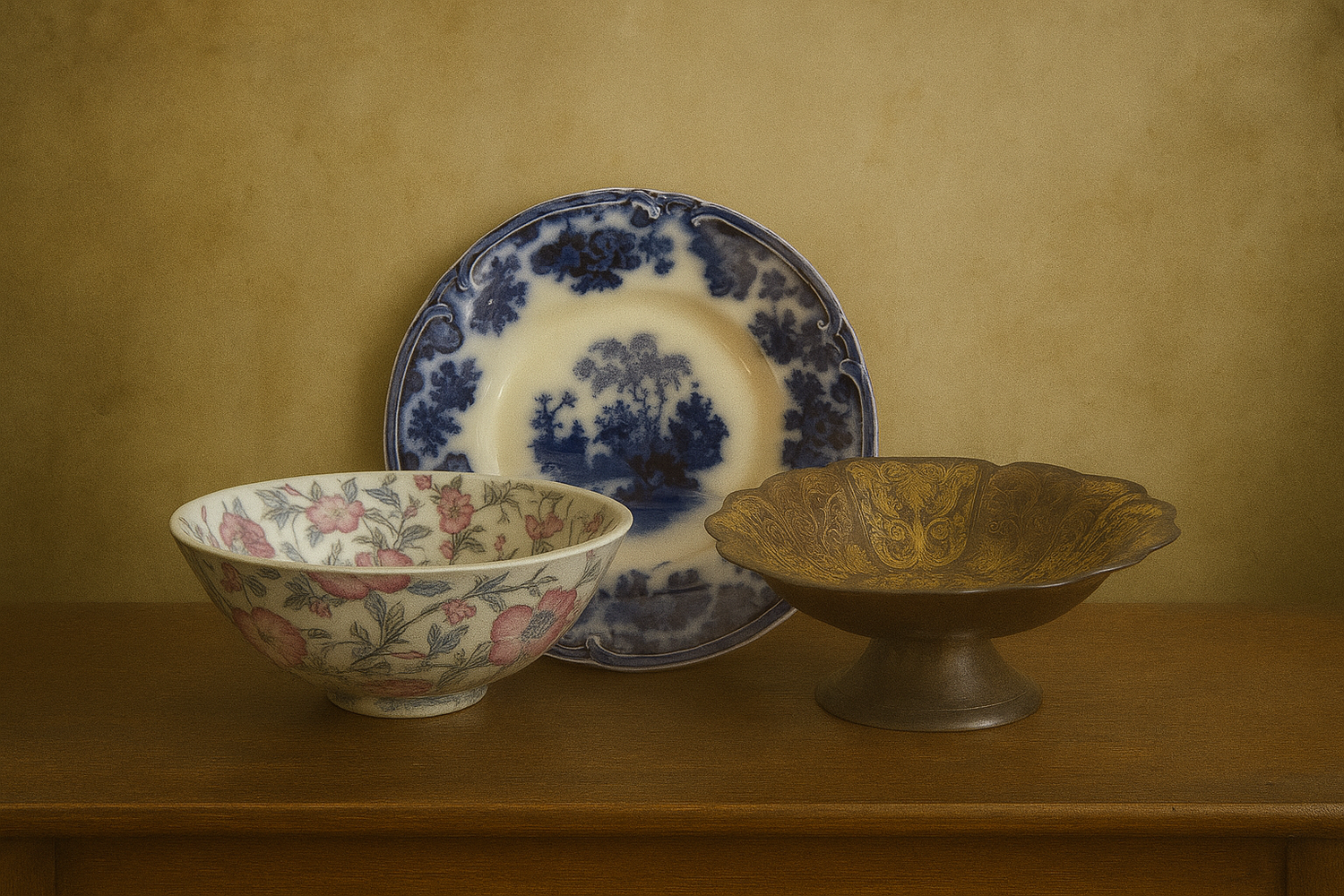
Ceramic vs Porcelain Plate: 5 Key Differences You Need to Know
|
|
Time to read 3 min
|
|
Time to read 3 min
When choosing dinnerware, many people wonder about the difference between ceramic vs porcelain plate. At first glance, they may look similar, but they are not the same. Both come from clay and go through high heat in a kiln, yet their qualities set them apart. Understanding these differences will help you decide whether ceramic or porcelain dinnerware is the better fit for your home.
A ceramic plate is made from natural clay and water, fired at a lower temperature than porcelain. This makes ceramic plates less dense but versatile and widely used. They often come in a variety of designs and are usually more affordable. Ceramic dinnerware is great for casual dining, but it may chip more easily over time.
If you are choosing between ceramic vs porcelain plates, ceramics are a budget-friendly option with a warm, handmade feel. However, ceramic or porcelain dinnerware should match your lifestyle needs—ceramics may not always be the best for heavy daily use.
Porcelain is a type of ceramic but fired at a much higher temperature, making it denser and stronger. A porcelain plate is thinner, lighter, and more durable than regular ceramics. Because of its smooth surface and refined appearance, it is often used for formal dining or display.
When comparing porcelain vs ceramic plates, porcelain usually lasts longer and is less porous, meaning it does not absorb liquids as easily. Antique porcelain plate collections, especially blue and white designs, are also highly valued by collectors.
The main difference between porcelain vs ceramic plates comes from the clay and minerals used to make them.
If you want something casual for everyday meals, a ceramics plate may be perfect. For special dinners or when you want something elegant, an antique porcelain plate or fine porcelain dinnerware is a better fit.
When comparing ceramic vs porcelain plate choices, durability is a big factor.
This is why collectors often treasure antique blue and white porcelain plates—they have survived for centuries thanks to porcelain’s strength. If you want plates that stand the test of time, porcelain vs ceramic plates are usually the better option.
Another difference between ceramic or porcelain dinnerware is how they look.
Collectors especially value the beauty of antique porcelain plate designs, with delicate patterns and fine details. A ceramics plate may feel more handmade, while porcelain offers a polished, timeless look.
Price also plays a role when choosing between ceramic vs porcelain plate styles.
Antique pieces, such as antique blue and white porcelain plates, can be very valuable. Owning an antique porcelain plate not only adds elegance to your home but may also serve as a family heirloom passed down through generations.
Your choice between ceramic or porcelain dinnerware depends on how you plan to use it.
Collectors often look for rare finds such as antique blue and white porcelain plates. These pieces highlight the craftsmanship and artistry of porcelain, making them more than just tableware. Whether you choose porcelain vs ceramic plates, it really depends on whether you want function, style, or both.
Both ceramic vs porcelain plate choices have their charm. A ceramics plate is casual, affordable, and great for everyday use, while an antique porcelain plate or modern porcelain dinnerware offers elegance and long-lasting value. Antique Collectors often prize antique blue and white porcelain plates for their history and craftsmanship.
In the end, choosing between ceramic or porcelain dinnerware comes down to your needs—do you want something practical for daily meals or refined plates that add sophistication to your table? Whether you lean toward porcelain vs ceramic plates, each option has something unique to offer.
If reading about ceramic vs porcelain plates sparked your curiosity, why not take a look at our collection? From timeless antique porcelain plates to delicate antique blue and white porcelain plates, each piece in our inventory carries beauty and character. Whether you are searching for a centerpiece for your dining table or a collectible item with history, our selection of ceramic or porcelain dinnerware has something worth exploring.

Do not just settle for everyday plates. Choose pieces that tell a story and elevate your dining experience. Whether you lean toward a ceramic vs porcelain plate for daily use or want to own a one-of-a-kind antique porcelain plate, now is the perfect time to make your choice.